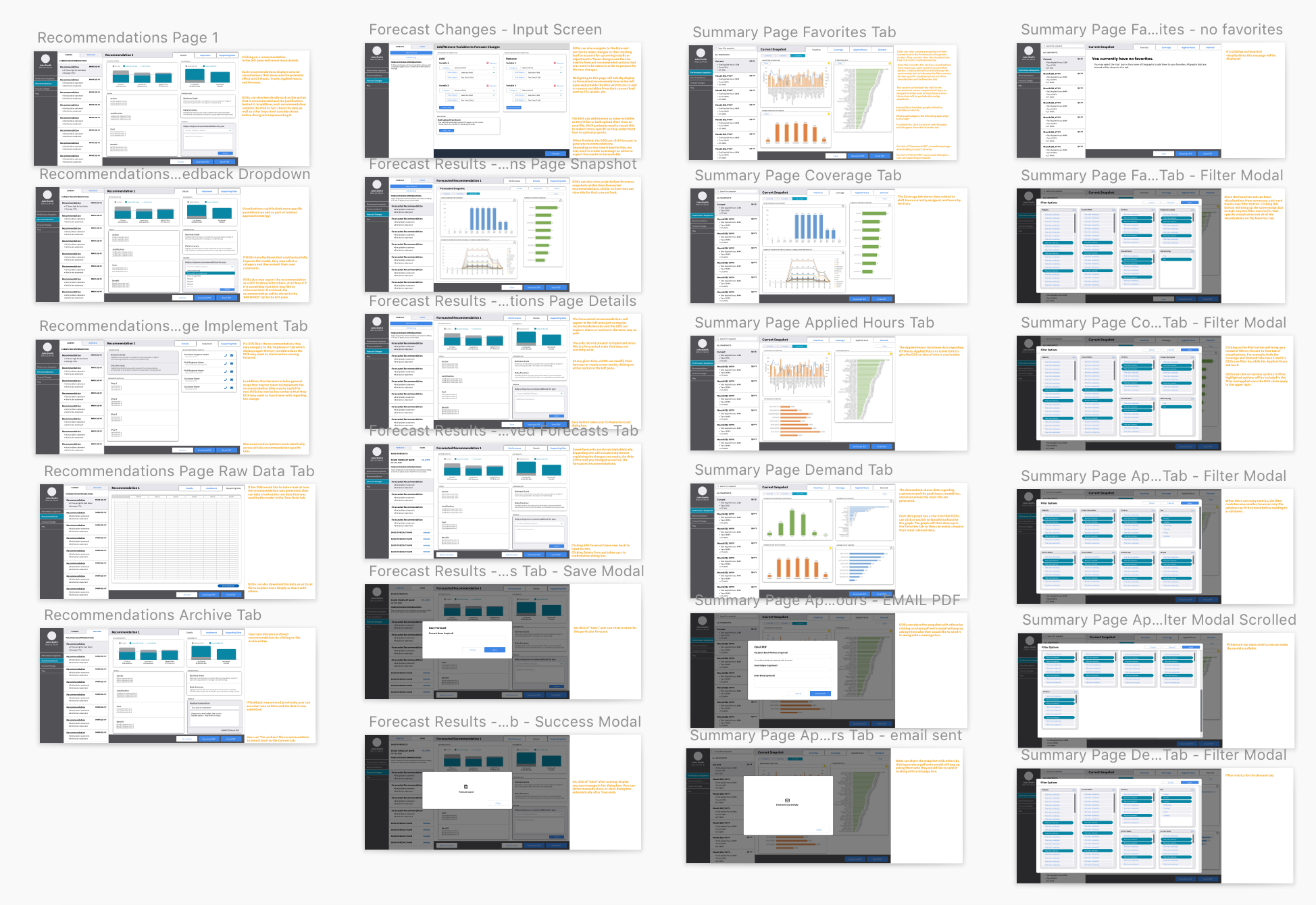2019-2020
Workforce Optimizer: Helping managers deploy their teams strategically
Problem: GE HealthCare’s service team managers do not have the bandwidth or technological tools to use analytics to determine the most efficient ways to assign their team members geographically.
How could we harness new data modeling and analytics to produce actionable information for them to use for deployment strategies?
Preliminary Design Work: I had already conducted many ridealongs with this same user group for one of my earlier projects, so I had a great baseline knowledge of the users going into this project. My biggest challenge getting started was to wrap my mind around the capabilities of the proposed Workforce Optimizer tool (built by the brilliant minds at the Global Research Center) and translating that into a user experience that Directors of Service could easily understand and interact with regularly.
I started by mapping out the different flows a user might go through while using this new tool, and worked through how the different calculations generated by the Workforce Optimizer would be best presented to someone who is short on time and needs a concise delivery of information.
Design Work & Testing: After I had the overall flows figured out, it was time to design ways to succinctly communicate some complex information (using a mix of tabular formats and data visualization).
The tool produced two main types of output. One was high-level summarized information in the form of recommendations (the tool could propose re-assigning some of a field engineer’s assigned assets, to streamline their workdays and travel routes). If a user was interested in this recommendation or wanted to learn more about why it was suggested, they could then drill deeper into the more detailed explanation of how the tool came to this conclusion.
Through many iterations, I achieved a design that I felt could successfully handle both scenarios while also maintaining design consistency with other field tools.
Testing and Refinement: The depth of the subject matter of this project meant that I would need to rely heavily on the users to guide me and provide insights into what was important.
I conducted regular feedback sessions every time I produced new design work, and shared the findings with the rest of the project team through visual formats so they could see what I had tested and what users said.
Because we spent a lot of time together discussing the intricacies of this project and saw each other’s pets on-screen during virtual meetings, I decided to make an illustration of the product owner’s Pomeranian dog for use on error pages as an Easter egg.



